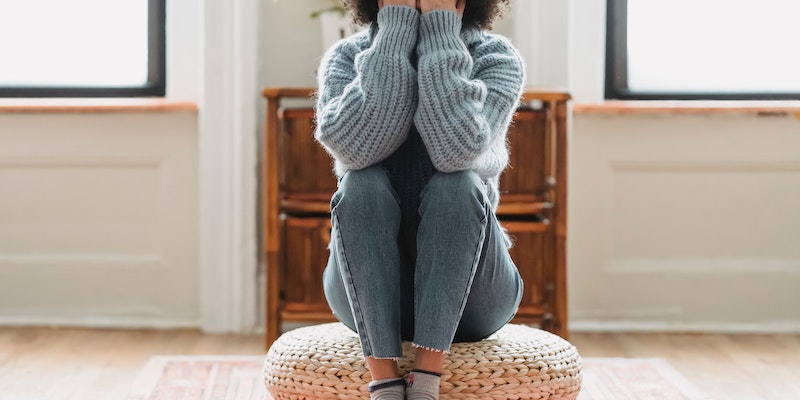Phobias Unraveled: Causes, Types, and Coping Mechanisms
Oct 05, 2023 By Madison Evans
Phobias are more than mere fears. They are intense, often irrational fears of specific things or situations that pose little to no real threat. These profound feelings can be incapacitating, with sufferers going to great lengths to avoid what they fear. Herein lies the difference between a common fear and a phobia: while the former is often a natural response to a potential threat, the latter can be so severe that it interrupts daily life. First, it's important to recognize that phobias are real medical disorders that have their origins in both the mind and the body.
What Are Phobias?
When addressing the topic "What are phobias?", it's indispensable to explore the different types of phobias individuals might experience.
The American Psychological Association broadly categorizes phobias into a few primary classifications. Let's dissect each type for a clearer understanding.
- Specific Phobias: A specific phobia is an intense, irrational fear of a particular object or situation. These phobias often develop during childhood and can continue into adulthood. Examples include:
- Arachnophobia: Fear of spiders. This doesn't mean merely getting startled by a spider; it involves an excessive fear, sometimes even at the mere thought or image of a spider.
- Ophidiophobia: Fear of snakes. Similarly, an individual might be scared even if they know the snake isn't venomous or is safely contained.
- Acrophobia: Fear of heights. Someone with this phobia might experience intense anxiety on the balcony of a high-rise building or while climbing a ladder.
- Aviophobia: Fear of flying. Even knowing the statistical safety of air travel, this phobia can prevent individuals from ever setting foot on an airplane.
- Social Phobia or Social Anxiety Disorder: Unlike specific phobias that concern objects or situations, social phobia revolves around interpersonal interactions. People with this condition harbor an intense fear of being scrutinized, humiliated, or judged by others. This fear is so compelling that they might avoid social situations entirely, leading to isolation. For instance, they might avoid public speaking, eating, or attending social gatherings.
- Agoraphobia: Once believed to be merely a fear of open spaces, our understanding has evolved. Individuals with agoraphobia fear being in situations where escaping might be challenging or where they might not receive help if they were to panic or incapacitate. This fear can be so paralyzing that some refuse to leave their homes.
Each person's experience with their phobia is unique. The facts about phobia classifications help medical professionals offer appropriate care, but they don't encapsulate the deeply personal and varied experiences of those with phobias.
Causes and Origins

One of the most frequent questions surrounding phobias is: Why do they develop? The interplay between nature (genetics) and nurture (environment) seems to be at the heart of this mystery.
- Genetic Predisposition: Some individuals might be inherently more susceptible to developing phobias due to their genetic makeup. This doesn't mean there's a "phobia gene," but certain genetic profiles can make one more receptive to anxiety disorders.
- Brain Functionality: The human brain, particularly the amygdala, is closely linked to fear responses. Located deep within the temporal lobes, the amygdala plays a pivotal role in processing emotions, especially those related to fear. An over-reactive amygdala can magnify fear reactions, contributing to phobias. Additionally, neurotransmitters in the brain, like serotonin and dopamine, could also play a role in phobia development.
- Traumatic Events: Many phobias can trace their origins to a traumatic incident. For instance, someone trapped in an elevator might develop a phobia of enclosed spaces (claustrophobia). A traumatic dog bite might lead to cynophobia (fear of dogs). The mind, in its bid to protect the individual, might develop a phobia as a defense mechanism against repeat trauma.
- Learned Behaviors: Observational learning can be a powerful tool. As children, we often look to adults for behavioral cues. If a child witnesses a parent or sibling displaying intense fear towards something, they might adopt that fear, thinking it's a natural reaction.
- Long-term Stress: Chronic stress, especially when not addressed, can lead to various mental health challenges, including phobias. Over time, the mind, constantly bathed in stress hormones like cortisol, may develop irrational fears as a coping mechanism.
Treatment and Management

When discussing phobias and how they impact lives, it's equally crucial to touch upon their management. Treatment primarily revolves around cognitive-behavioral therapy (CBT). This therapeutic approach teaches individuals to recognize and change negative thought patterns and behaviors perpetuating their fears. Over time, CBT can help reduce the fear response and improve the individual's reaction to the phobia trigger.
Medication isn't typically the first line of treatment for phobias. However, certain antidepressants or sedatives can be prescribed to reduce anxiety symptoms associated with phobias.
It's worth noting that confronting one's fear head-on, called exposure therapy, is a common treatment method. Under the guidance of a therapist, the individual is gradually and repeatedly exposed to the phobic object or situation until the fear response diminishes.
Facts about Phobia: Dispelling Myths
Contrary to popular belief, phobias aren't merely "all in the mind." They have physiological effects, such as increased heart rate, trembling, sweating, and fainting. One of the primary facts about phobias is that they're not just an overreaction but a deeply ingrained response.
Another misconception is that phobias are rare. In reality, millions suffer from some form of phobia worldwide. Some might not even realize they have a phobia until confronted with the specific object or situation that triggers it.
Lastly, while it's true that many live with their phobias without seeking treatment, it doesn't mean they're untreatable. With the right approach and professional guidance, most phobias can be managed or even overcome.
Frequently Asked Questions (FAQs)
Can phobias develop later in life?
Absolutely. While many phobias manifest during childhood, they can arise at any age, especially following a traumatic event or significant life change.
What's the difference between fear and phobia?
While both involve a sense of dread, a phobia is an intense, often irrational fear that can lead to avoidance behavior. It’s more enduring and disruptive than a regular fear.
Are phobias genetic?
There's evidence to suggest a genetic component. If a family member has a phobia or another anxiety disorder, there's an increased likelihood of developing one. However, environment and personal experiences play significant roles as well.

Unmasking Pneumonia: The Basics

Meditative Healing: 11 Techniques to Alleviate Depression

Unlocking a Smoke-Free Life: How to Quit Successfully

Battling Neck Pain: Identifying Causes and Finding Relief

Explore the Importance of Self-Love: Top 5 Meditation Tips

Mother's Early Alerts: Could You Be Pregnant?

Explore 10 Prominent Health And Nutritional Benefits Of Rutabaga


